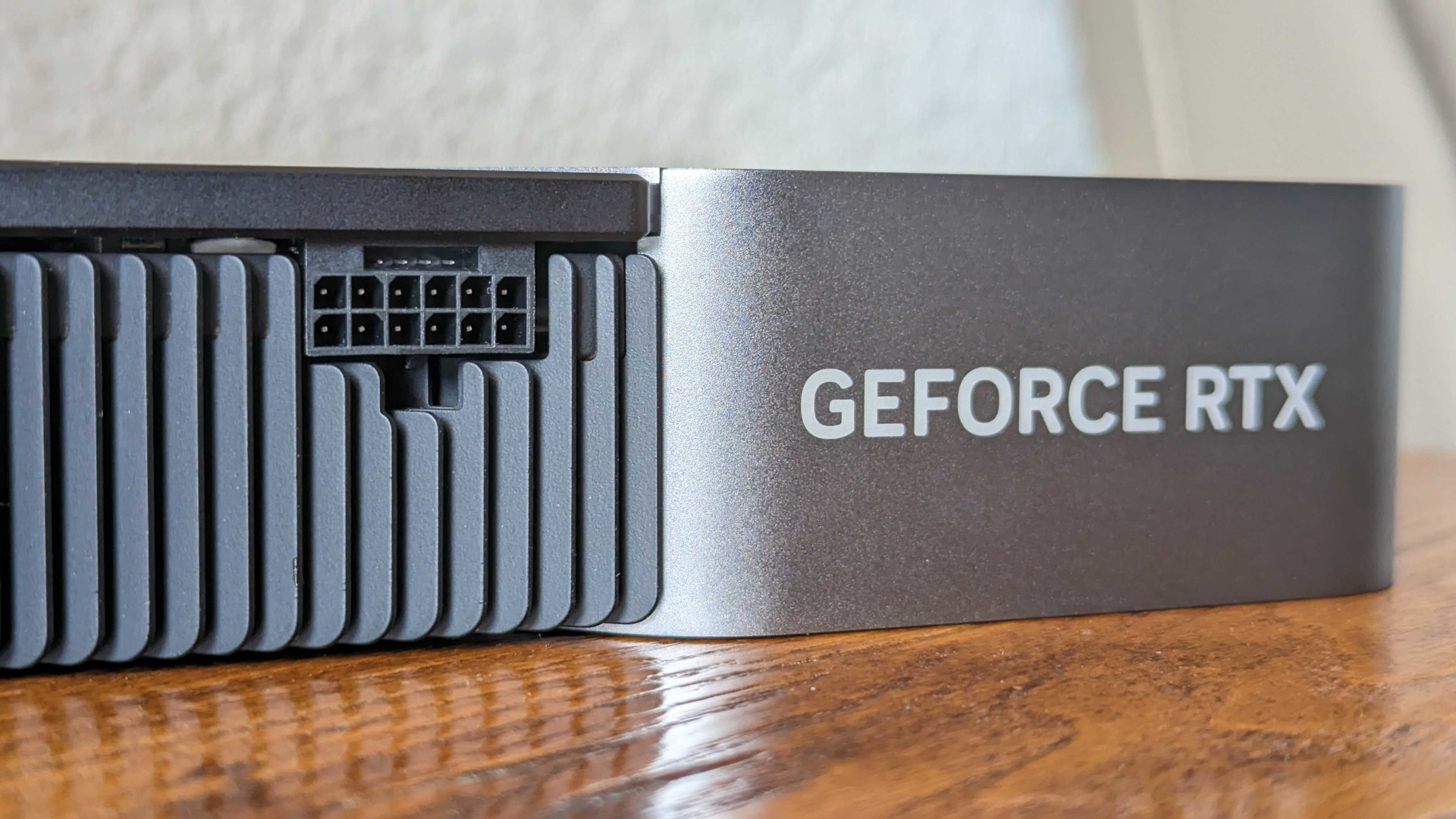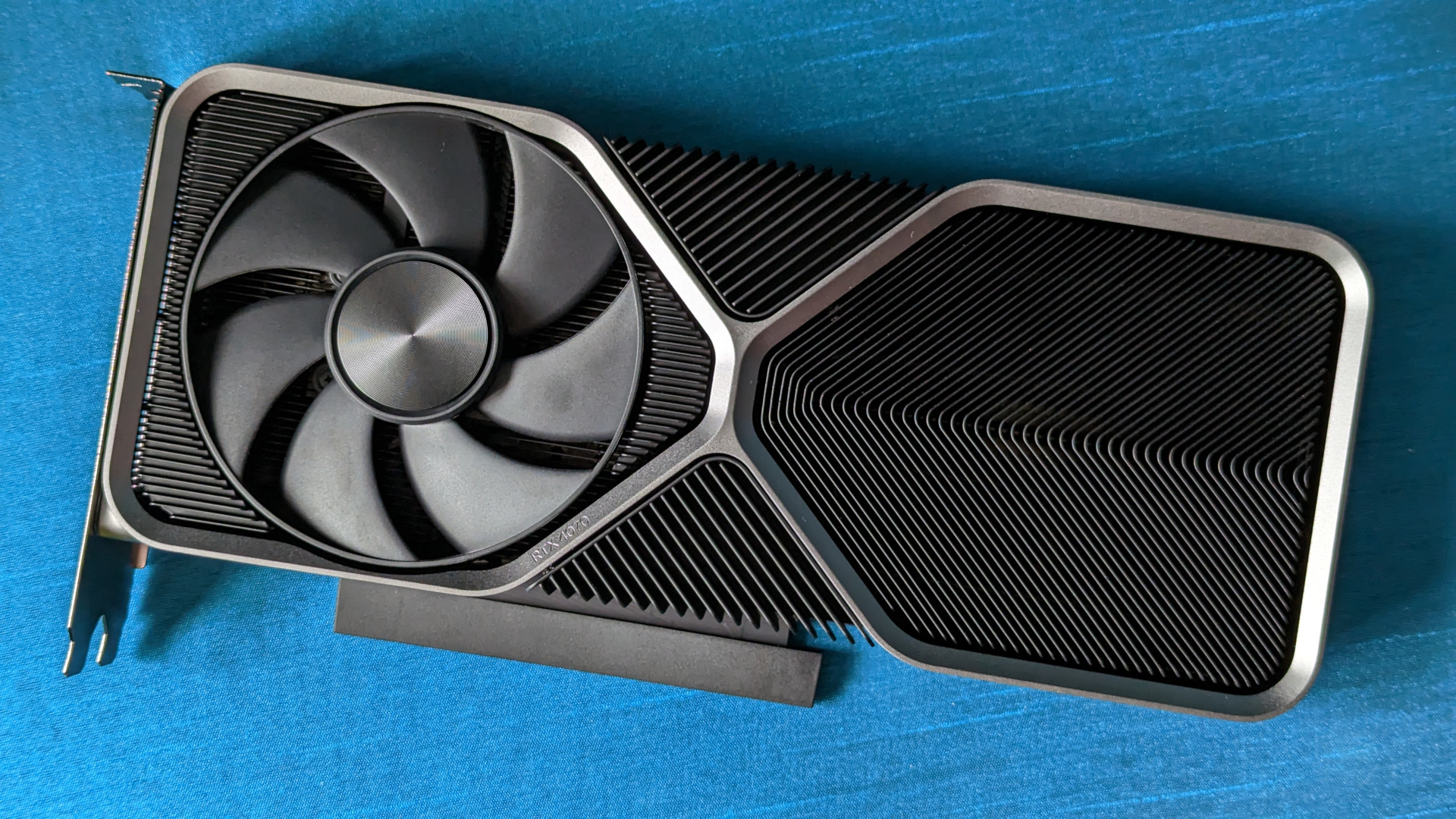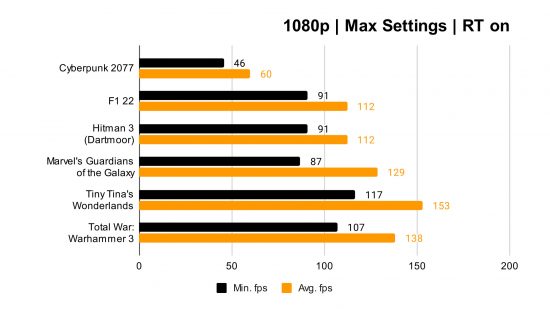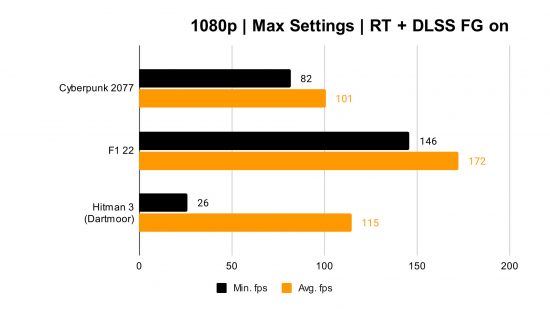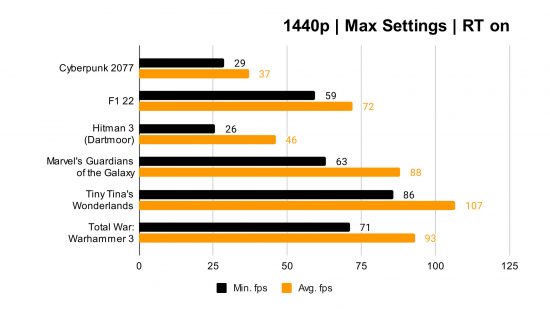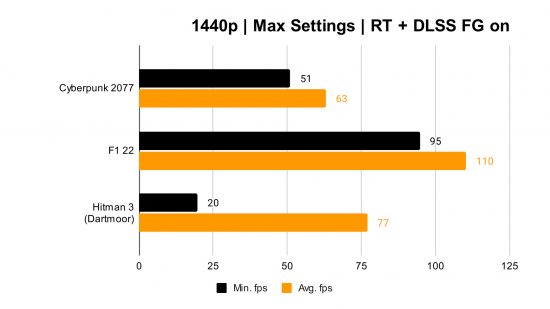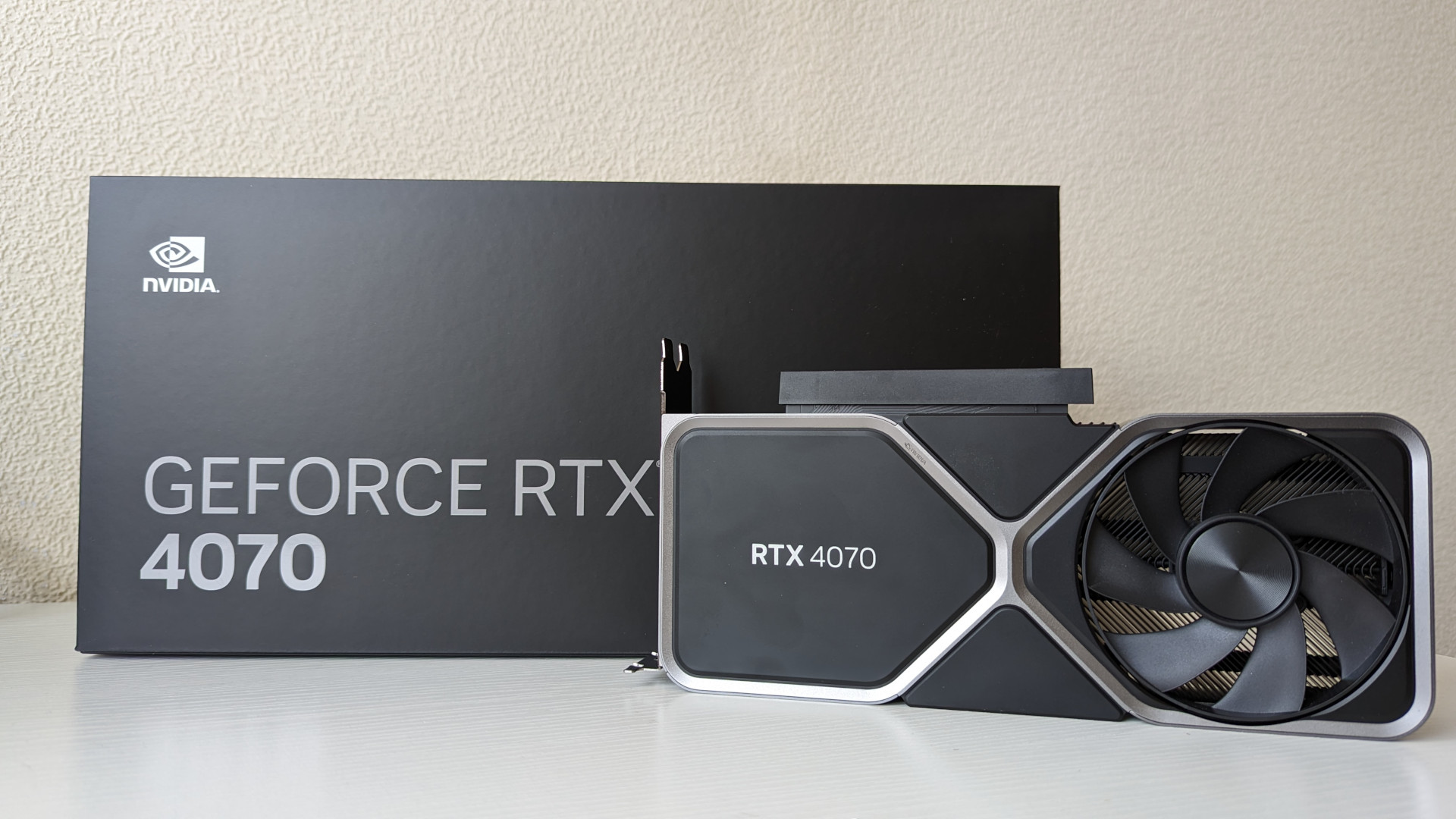Our Verdict
The Nvidia GeForce RTX 4070 makes DLSS Frame Generation more affordable and offers compelling performance at both 1080p and 1440p, but is held back by its 12GB of VRAM at 4K.
Ahead of our Nvidia GeForce RTX 4070 review, I was skeptical that the pixel pusher would make good on its promise to deliver the power of the Lovelace microarchitecture at a more affordable price point. Thankfully, it largely does this. In fact, this GPU would be a slam dunk if not for some specification shortcomings, and its higher than expected $599 / £589 price.
We’ve been waiting for a new mid-range champion to enter the best graphics card race, and the RTX 4070 is exactly what we need for the most part. I’ve been using it for the past week or so, and during that time it’s coloured me impressed.
This review will cover the following topics – click on one of these handy links if you’d like to go right to that section:
Nvidia GeForce RTX 4070 specs
As you might expect, Nvidia GeForce RTX 4070 specs are somewhat similar to the Ti model. However, you don’t have to look too closely to notice the many differences between the two graphics cards.
Here are the Nvidia GeForce RTX 4070 specs:
| Nvidia GeForce RTX 4070 specs | |
| GPU | AD104 |
| CUDA cores | 5,888 |
| Tensor cores | 184 (Fourth Gen.) |
| RT cores | 46 (Third Gen.) |
| Base clock | 1,920MHz |
| Boost clock | 2,475MHz |
| VRAM | 12GB GDDR6X |
| Memory clock | 2,625MHz |
| Bus width | 192-bit |
| TGP | 200W |
| MSRP | $599 / £569 |
The RTX 4070 boasts 12GB of GDDR6X VRAM, matching the Nvidia GeForce RTX 4070 Ti and offering a welcome boost versus the 8GB of memory on the RTX 3070. Much as it pleases me that Nvidia is providing a generational improvement in this regard, I would’ve preferred to see this graphics card (and its bigger brother) armed with a bit more.
While 12GB of VRAM is fine for 1080p and 1440p gaming, this amount of memory can be easily saturated when playing some games at 4K, leading to performance issues. I’ll touch on this in more depth when getting to my benchmarks, but the long and short of the matter is that 4K gamers will be better served by beefier alternatives like the Nvidia GeForce RTX 4080.
To the credit of the RTX 4070, this limitation is much easier to swallow, given its much lower cost versus the RTX 4070 Ti, but Nvidia has expectedly made cuts to clock speeds and core counts to achieve this price point. In spite of this, the value offered by this pixel pusher’s raw power remains high. Furthermore, DLSS Frame Generation support helps give the RTX 4070 a leg up over comparably powerful last-generation offerings.
Finally, it’s worth noting that the RTX 4070 power connector can differ. The Founders Edition mirrors the rest of the RTX 4000 series in its use of the 16-pin PCIe 5.0 12VHPWR, while some models use a single 8-pin power connector instead. There doesn’t appear to be any performance difference between the two configurations, but it’s worth bearing in mind if you don’t fancy dealing with unsightly adapters.
Either way, with a TDP of 200W, you won’t need the best power supply to power the RTX 4070. In fact, Nvidia suggests pairing it with an entirely reasonable 650W PSU.
Nvidia GeForce RTX 4070 size and design
If you thought reasonably sized graphics cards were a thing of the past, fret not, as the Nvidia GeForce RTX 4070 size returns a welcome degree of normalcy to the space. Gone is the oversized cooler of the RTX 4090 that also appeared on the RTX 4080, replaced by a comparatively dinky but nonetheless effective dual-slot design.
In my testing, the temperature of the RTX 4070 peaked at 71°C, happily maintaining its advertised boost clock of 2,475MHz and pushing itself further when it could. There was no audible coil whine on this Founders Edition model either, meaning high frame rate gaming on the best gaming monitors can be enjoyed without that wretched background buzz.
Aside from its size, there’s little about the RTX 4070 design that separates it from its more expensive brethren. It uses the same tried and tested display output configuration of a single HDMI 2.1 port and three DisplayPort 1.4 ports. This does technically mean that the graphics card can display games at up to 4K/240Hz or even 8K/60Hz via Display Stream Compression (DSC). However, there aren’t many games you’ll be able to achieve this with if you crank up the settings, even with DLSS Frame Generation.
Nvidia GeForce RTX 4070 benchmarks
In my Nvidia GeForce RTX 4070 benchmarks, I’ve collected frame rate data for native 1080p, 1440p, and 4K resolutions. I also ran DLSS Frame Generation tests separately. Each benchmark was run three times to produce an average result, using the game’s highest settings with ray tracing enabled.
Here are the specs of my test system:
- GPU: Nvidia GeForce RTX 4070 Founders Edition
- Driver version: 531.61
- OS: Windows 11 Pro (22621.1555)
- Motherboard: Asus TUF Gaming X670E-Plus
- CPU: AMD Ryzen 5 7600X
- RAM: Corsair Vengeance 32GB (2 x 16GB) DDR5 6,000MHz
- SSD: SK Hynix Platinum P41 2TB
- PSU: Corsair RMx SHIFT Series 1000W
Nvidia GeForce RTX 4070 performance
Testing Nvidia GeForce RTX 4070 performance at 1440p highlights the strong raw power this graphics card has to offer. Whether you’re the kind of person to turn ray tracing on for maximum eye candy or leave it off for the highest frame rate, this pixel pusher packs more than enough punch.
Cyberpunk 2077 remains one of the most demanding rays tracing games out there, but the Nvidia GeForce RTX 4070 capably handles CD Projekt Red’s neon-soaked RPG. Playing at native 1440p resolution turns in average frame rates of 37 frames per second (fps), but the GPU can boost performance up to a whopping 115fps using the full Nvidia DLSS 3 suite of DLSS Super Resolution and DLSS Frame Generation. As you’ll have seen from our charts above, the latter feature alone brings things up to a comfortable 63fps, a 70% improvement without the aid of upscaling.
It’s a similar story in other ray tracing videogames, with Hitman 3 causing the RTX 4070 to break a sweat with average frame rates of 47fps. Turning on DLSS Frame Generation sees the pixel pusher blast through the benchmark, providing a 63% uplift to 77fps. The feature also sees F1 22 performance race ahead from a perfectly good 72fps to a whopping 110fps. Even without Frame Generation, however, the graphics card turned in a healthy 88fps in Marvel’s Guardians of the Galaxy.
Naturally, things are equally impressive without these visual or performance-boosting bells and whistles. The RTX 4070 pushed out 93fps in Total War: Warhammer 3 and reached three-digit frame rates, 107fps, in Tiny Tina’s Wonderlands.
Given how well it shines at 1440p, the RTX 4070 is also a great fit for high refresh rate 1080p gaming. It achieves average frame rates well over 100fps in all of our test suites bar Cyberpunk 2077 which came in at a respectable 60fps.
However, 4K proves to be something of an Achilles heel for the GPU, largely due to the amount of VRAM it has at its disposal. In both Cyberpunk 2077 and Hitman 3, the RTX 4070’s memory is oversaturated and leads to stuttering. DLSS Super Resolution can alleviate this since it upscales from a lower rendering resolution, but it’s by no means a silver bullet.
Nvidia GeForce RTX 4070 price
The Nvidia GeForce RTX price falls in midrange territory, albeit at the higher end. You can currently buy the GeForce RTX 4070 for $599 / £589, and while it saddens me to see this historically more affordable class of GPU become more expensive, I’m thankful the $100 price hike isn’t as severe as the rest of the RTX 4000 series.
Despite this higher cost, the RTX 4070 is currently the cheapest current-generation graphics card you can buy right now, as we’re yet to see a comparable AMD Radeon competitor materialize. As such, the only real competition this graphics card faces is against the used market of last-generation GPUs, given the Nvidia GeForce RTX 4070 Ti is much more costly with little performance improvement.
The RTX 4070 offers a compelling upgrade path to those with 10 and 20-series GPUs. DLSS Frame Generation helps set it apart from the 30 series pixel pushers that it closely mirrors, but if you’re not interested in the feature, you do have other options. Comparable used Ampere graphics cards like the RTX 3080 can be had for around $450-$500, but you do run the risk of picking up an ex-mining card.
Nvidia GeForce RTX 4070 verdict
The Nvidia GeForce RTX 4070 feels like a necessary turning point for the RTX 4000 series. It’s more affordable, smaller, and at better value than its siblings, making it without a doubt a great choice for most people looking to upgrade to a new GPU.
I do wish it had more VRAM and that it hadn’t been subject to a price hike compared to its predecessors. Here’s hoping that the Nvidia GeForce RTX 4060 doesn’t fall too similar of a fate when it arrives. Until then, hail the new (slightly pricey) midrange king.
Pros:
- Great 1440p and 1080p performance
- Better value than other RTX 4000 GPUs
- DLSS Frame Generation support
Cons:
- Only 12GB of VRAM
- More expensive than predecessors
Where to buy the Nvidia GeForce RTX 4070
The Nvidia GeForce RTX 4070 is available worldwide from major retailers, such as Amazon and Best Buy. Here are some of the best prices available right now:
Nvidia GeForce RTX 4070 alternatives
If the Nvidia GeForce RTX 4070 doesn’t sound right for you, check out our guide on the best graphics cards for alternatives, including cheap champions and fancy flagships.


